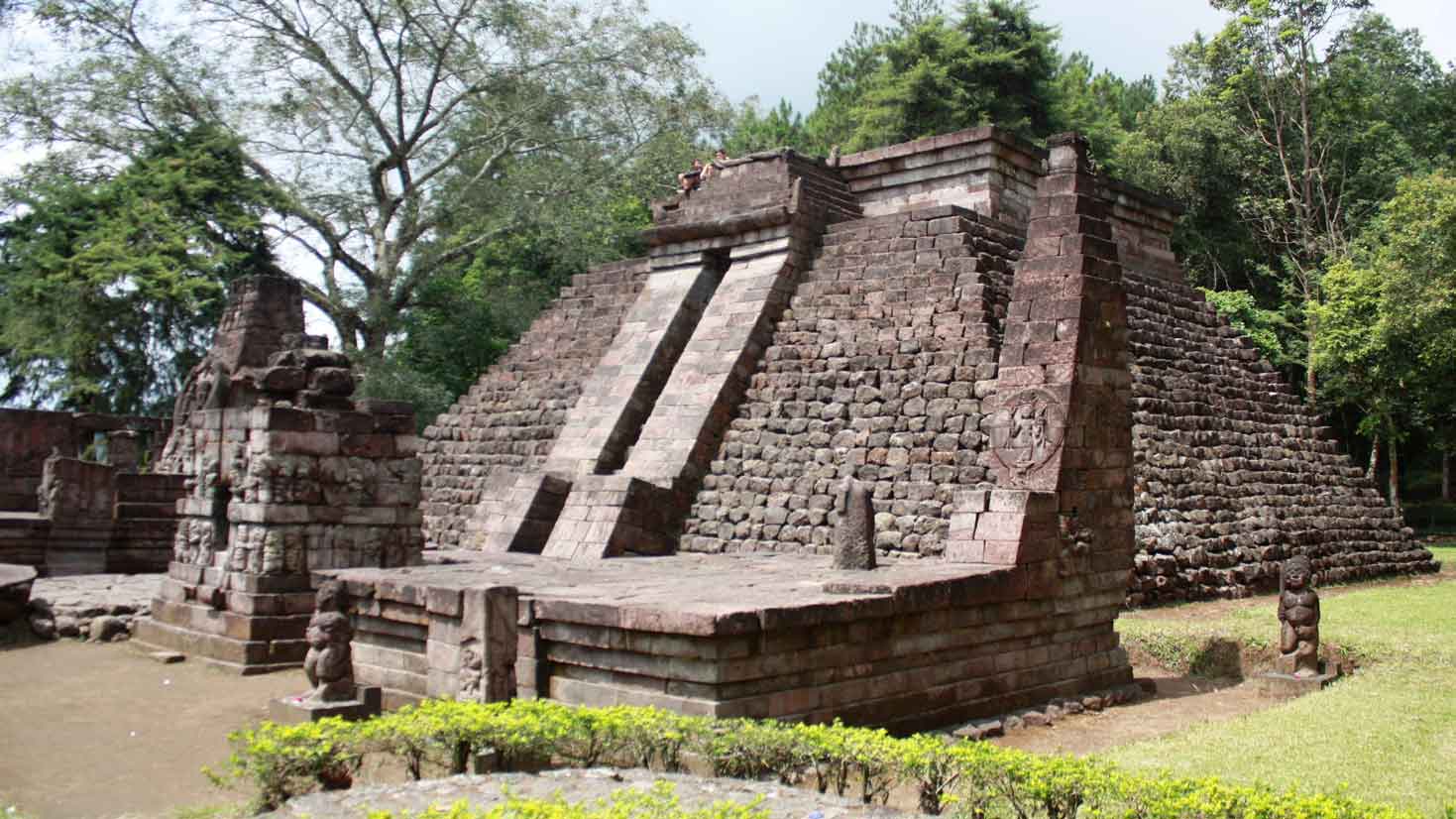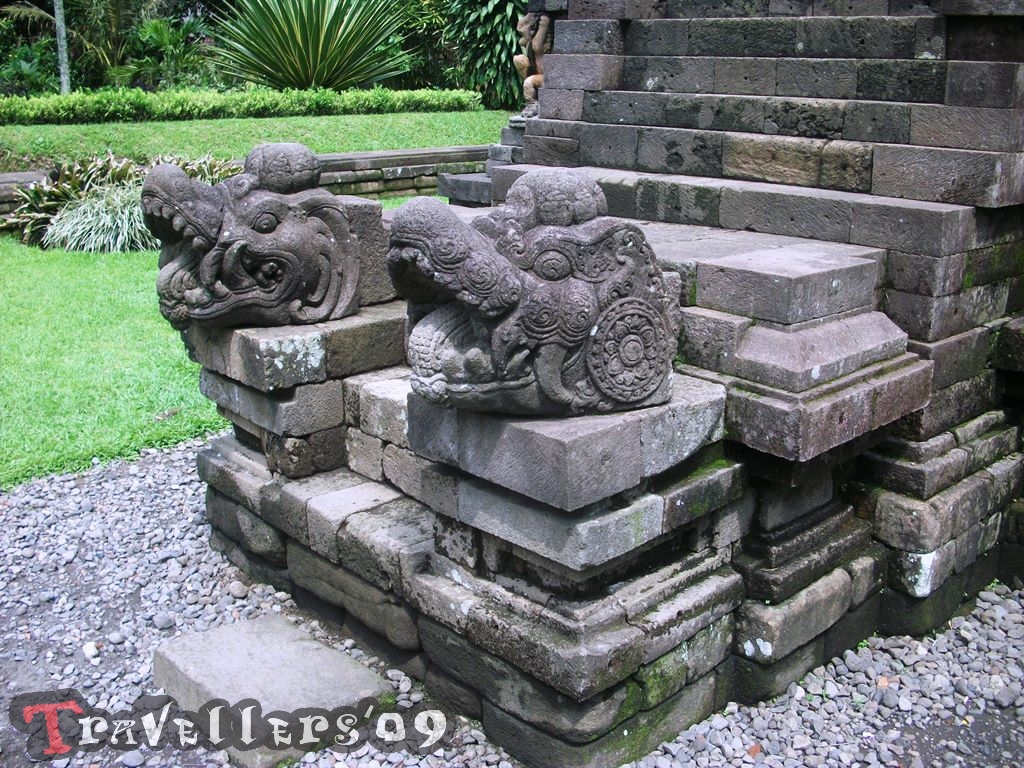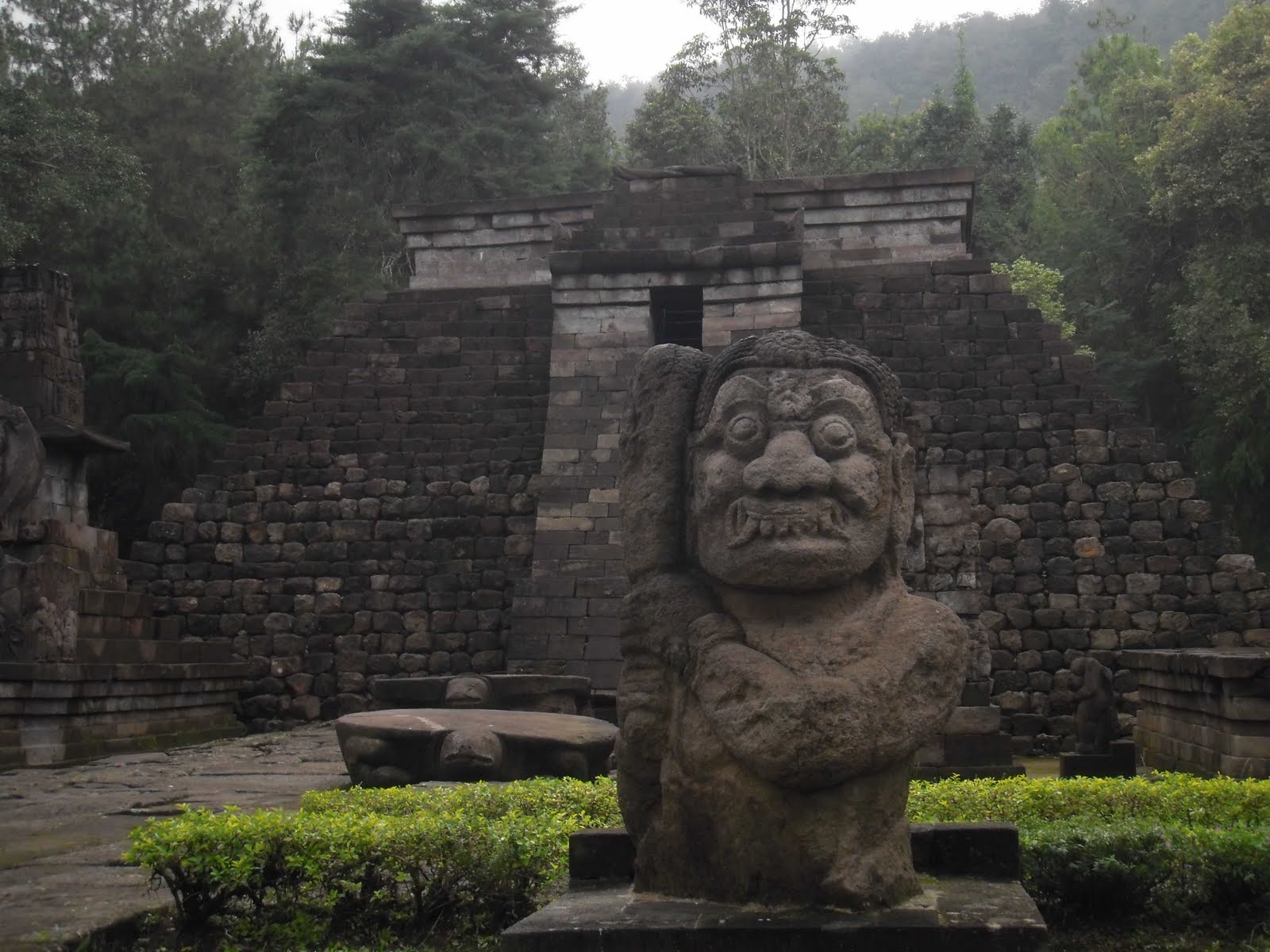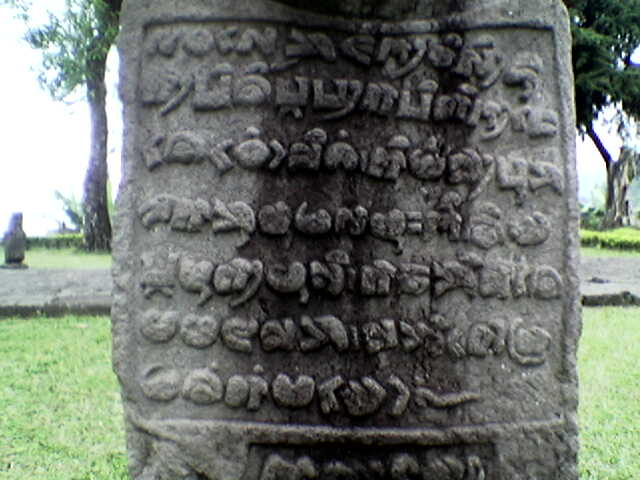It looks like you're using an Ad Blocker.
Please white-list or disable AboveTopSecret.com in your ad-blocking tool.
Thank you.
Some features of ATS will be disabled while you continue to use an ad-blocker.
13
share:
By Nathaniel Scharping | April 4, 2016 5:06 pm
blogs.discovermagazine.com...
.
[Have used a search engine and reviewed 12 pages of thread listings to prevent a duplicate. I hope I succeeded.]
Interesting stuff.
I think I need to ponder this one some more.
I had understood from earlier research that all tribal groups in the Americas originated in a region in Southern Siberia, North of Mongolia. And, that there were 2 major migrations to the Americas from that group.
I think also, that somehow the Australian tribal groups and the South Seas islanders also had some DNA that connected somehow with Americas' tribal groups. But that wasn't very clear to me. Perhaps others better read on the topic can enlighten me.
I love the DNA stuff but I don't have the time to devote to it to unravel the vast complexity in order to sound something above a blathering idiot about it.
I know what my haplo group is from my Dad: I2b2b in the older labeling format.
And from my matrilinial side: H
So it would appear that I don't have Native American blood in me as we were told all our growing up. I still suspect there may have been a couple of Cherokee wives in our history but maybe not as I don't think the DNA has indicated it, yet.
Anyway--it seems like this latest study may present as many puzzlements as answers?
Can those with more of a grasp on all this than I have enlighten us?
blogs.discovermagazine.com...
.
[Have used a search engine and reviewed 12 pages of thread listings to prevent a duplicate. I hope I succeeded.]
.
. . .
.
Drawing the Map
To accomplish their task, researchers from the Australian Centre for Ancient DNA (ACAD) at the University of Adelaide enlisted the help of 92 mummies and skeletons ranging in age from 500 to 8,600 years old. By sequencing mitochondrial DNA from these specimens, the researchers were able to construct a rough timeline of population dispersion in the Americas. They found that a small group of indigenous settlers first reached the continent from Siberia and moved down the Pacific Coast around the year 14,000 B.C. These groups spread throughout the Americas relatively quickly, the researchers say, reaching the southern part of Chile roughly 1,500 years after they entered what is now Alaska.
.
. . .
.
It didn’t take much detail to identify the sudden disappearance of almost all genetic lineages in the 1400s, however. The native people had been separated from Europeans for thousands of years, producing marked changes in their DNA. The sudden switch was immediately noticeable. The researchers compared the DNA of indigenous people today to that of the ancient mummies and found no evidence that the two populations were related. They did not analyze DNA from Native Americans in North America, however, who were largely unaffected by European settlers at that time.
“Surprisingly, none of the genetic lineages we found in almost 100 ancient humans were present, or showed evidence of descendants, in today’s indigenous populations,” says joint lead author Dr Bastien Llamas, Senior Research Associate with ACAD, in a press release.
.
. . .
Interesting stuff.
I think I need to ponder this one some more.
I had understood from earlier research that all tribal groups in the Americas originated in a region in Southern Siberia, North of Mongolia. And, that there were 2 major migrations to the Americas from that group.
I think also, that somehow the Australian tribal groups and the South Seas islanders also had some DNA that connected somehow with Americas' tribal groups. But that wasn't very clear to me. Perhaps others better read on the topic can enlighten me.
I love the DNA stuff but I don't have the time to devote to it to unravel the vast complexity in order to sound something above a blathering idiot about it.
I know what my haplo group is from my Dad: I2b2b in the older labeling format.
And from my matrilinial side: H
So it would appear that I don't have Native American blood in me as we were told all our growing up. I still suspect there may have been a couple of Cherokee wives in our history but maybe not as I don't think the DNA has indicated it, yet.
Anyway--it seems like this latest study may present as many puzzlements as answers?
Can those with more of a grasp on all this than I have enlighten us?
a reply to: BO XIAN
You could have had Cherokee wives who simply didn't have children in your family hence no dna but their influence would still have been felt.
I don't quite understand why no dna was compared to the North American Indians that seems to make no sense because surely they would have been these people's ancestors? Or have I mistaken what you wrote?
You could have had Cherokee wives who simply didn't have children in your family hence no dna but their influence would still have been felt.
I don't quite understand why no dna was compared to the North American Indians that seems to make no sense because surely they would have been these people's ancestors? Or have I mistaken what you wrote?
a reply to: Shiloh7
If I understand what the article is saying . . .
I THINK it's saying that they compared the DNA of 100 mummies in the Americas . . . and NONE OF THEM had DNA that matched any of the tribal groups currently living in the Americas.
That's kind of . . . incredible to the max.
I don't have any explanation for it. I'm not sure they do . . . other than that the groups represented by the 100 mummies died out and none of their offspring or relatives had anything to do with current tribal groups.
Maybe the ATS experts on such topics will tell us if my understanding is off the wall, or not.
If I understand what the article is saying . . .
I THINK it's saying that they compared the DNA of 100 mummies in the Americas . . . and NONE OF THEM had DNA that matched any of the tribal groups currently living in the Americas.
That's kind of . . . incredible to the max.
I don't have any explanation for it. I'm not sure they do . . . other than that the groups represented by the 100 mummies died out and none of their offspring or relatives had anything to do with current tribal groups.
Maybe the ATS experts on such topics will tell us if my understanding is off the wall, or not.
a reply to: Shiloh7
Yes, I think that's exactly right . . . Granddad or Great Granddad had a Cherokee wife who died of some epidemic or another--maybe before having children. Then AFTER that wife, he married grandma/great grandma.
But I had an impression there was also a Cherokee wife in the generation before that one. But I was never very clear about it.
Yes, I think that's exactly right . . . Granddad or Great Granddad had a Cherokee wife who died of some epidemic or another--maybe before having children. Then AFTER that wife, he married grandma/great grandma.
But I had an impression there was also a Cherokee wife in the generation before that one. But I was never very clear about it.
originally posted by: BO XIAN
a reply to: Shiloh7
If I understand what the article is saying . . .
I THINK it's saying that they compared the DNA of 100 mummies in the Americas . . . and NONE OF THEM had DNA that matched any of the tribal groups currently living in the Americas.
That's kind of . . . incredible to the max.
I don't have any explanation for it. I'm not sure they do . . . other than that the groups represented by the 100 mummies died out and none of their offspring or relatives had anything to do with current tribal groups.
Maybe the ATS experts on such topics will tell us if my understanding is off the wall, or not.
Sorry but the context of this is problematic. They are suggesting that a group of people with an as yet unknown heritage (civilisation is a very specific term which the article does nothing to validate) died out after contact with European settlers, that these people had DNA that did not match other local tribes................ but did not test against native Americans? That sounds remarkably like cooking the books to get the figures you want, doesn't it?
a reply to: BO XIAN
"I think also, that somehow the Australian tribal groups and the South Seas islanders also had some DNA that connected somehow with Americas' tribal groups. But that wasn't very clear to me. Perhaps others better read on the topic can enlighten me."
Australian Aboriginal bloodline includes the Denisovans from Siberia not Neanderthal from further south. Perhaps the research shows similar genes in Americas?
"I think also, that somehow the Australian tribal groups and the South Seas islanders also had some DNA that connected somehow with Americas' tribal groups. But that wasn't very clear to me. Perhaps others better read on the topic can enlighten me."
Australian Aboriginal bloodline includes the Denisovans from Siberia not Neanderthal from further south. Perhaps the research shows similar genes in Americas?
edit on 4America/Chicago40Thu, 21 Apr 2016 03:40:58 -050021300000016 by weirdguy because: (no reason given)
a reply to: weirdguy
I have thoroughly enjoyed reading a book by Frank Joseph called The Lost Civilisation of Lemuria. He was fascinated by seeing a little girl from China demonstrating one of their oldest dances. What fascinated him was that he had seen virtually the same costume and dance done by a South American and he couldn't get over the similarities, so he researched the links across the southern hemisphere between cultures.
What he found is in the above book in which he talks about the people in the Southern hemisphere some groups which have died out and covers places like Nan Madol etc which cannot be explained. We always assume that ancient civilisations crossed the northern hemisphere but we cover little in the southern hemisphere whilst we were under ice yet we have anomalies such as Easter Island there. I know this is a little off topic about the dna but it does open up discussion on the different peoples living across the southern part of our planet and just how far they navigated and how ordered their societies were.
I have thoroughly enjoyed reading a book by Frank Joseph called The Lost Civilisation of Lemuria. He was fascinated by seeing a little girl from China demonstrating one of their oldest dances. What fascinated him was that he had seen virtually the same costume and dance done by a South American and he couldn't get over the similarities, so he researched the links across the southern hemisphere between cultures.
What he found is in the above book in which he talks about the people in the Southern hemisphere some groups which have died out and covers places like Nan Madol etc which cannot be explained. We always assume that ancient civilisations crossed the northern hemisphere but we cover little in the southern hemisphere whilst we were under ice yet we have anomalies such as Easter Island there. I know this is a little off topic about the dna but it does open up discussion on the different peoples living across the southern part of our planet and just how far they navigated and how ordered their societies were.
originally posted by: BO XIAN
Anyway--it seems like this latest study may present as many puzzlements as answers?
Can those with more of a grasp on all this than I have enlighten us?
The Spanish killed 99% of the American natives.
How is this surprising that most of their genetic lineage disappeared? That's like what you should expect...
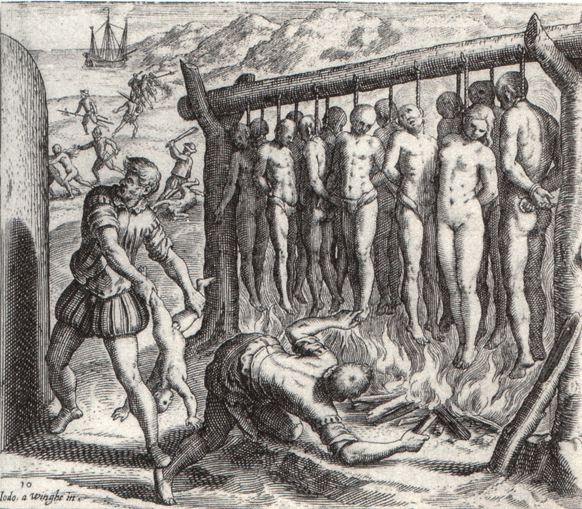
edit on 21-4-2016 by SugarDaddy because: (no reason given)
originally posted by: Shiloh7
a reply to: weirdguy
I have thoroughly enjoyed reading a book by Frank Joseph .
Very bad source
en.wikipedia.org...
a reply to: BO XIAN
My native ancestry didnt show up on my DNA either, but I only had a mitochondrial test taken, which only follows one grandmother who was not native.
I didnt understand that the test would only focus on one ancestors lineage. So, IMO getting a DNA test is really just a complete waste of money. It isnt a broad enough search.
My native ancestry didnt show up on my DNA either, but I only had a mitochondrial test taken, which only follows one grandmother who was not native.
I didnt understand that the test would only focus on one ancestors lineage. So, IMO getting a DNA test is really just a complete waste of money. It isnt a broad enough search.
originally posted by: BO XIAN
I've done the broadest mother's side and the BIG Y at FTDNA.com and found out a lot of interesting stuff--just not all I'd hoped for.
You have European heritage but you aren't related to Royalty, lots of those results around, I sometimes wonder if they even bother to do the science
I love this fascination from Americans with their lineage. Especially when they want so bad to belong to a "special" lineage to give more meaning to
their life.
Probably because it's a nation of immigrants so I can understand the quest for your roots. But sometimes all this wishful thinking is just too funny. "I'm part cherokee, part Merovingian and part Jewish. If someone must be the Messiah it has to be me".
Probably because it's a nation of immigrants so I can understand the quest for your roots. But sometimes all this wishful thinking is just too funny. "I'm part cherokee, part Merovingian and part Jewish. If someone must be the Messiah it has to be me".
First off they are talking about South America, using the term "Americas" is confusing the issue as they clearly state North American DNA was
excluded.
Relevant findings.
Additionally the "Out of Siberia" theory is just a theory. Native North Americans don't accept it and never have. More information has been coming to light so it isn't written in stone.
More information has been coming to light concerning linking possible migrations from the South Pacific to South America, this is also a work in progress.
The Theory of trade and populations movement from south to north into the southern US, plus the MoundBuilders in the upper midwest is in the mix.
Plus more I'm forgetting.
While the study cited in the OP seems to be a legit endeavor to nail a few things down, without knowing how large their sample studies of the current population was for comparison it's very likely this study is skewed. A statician would be the first to tell you " You can get any answer you want by playing with the numbers".
Is their conclusion worth more follow up? Sure.
But again it isn't the last word on things, just what they found looking at what they looked at. Under narrow perimeters , given the DNA they had to work with or CHOSE to work with.
Relevant findings.
“Surprisingly, none of the genetic lineages we found in almost 100 ancient humans were present, or showed evidence of descendants, in today’s indigenous populations,” says joint lead author Dr Bastien Llamas, Senior Research Associate with ACAD, in a press release.
In other words, the populations of South and Central America were essentially destroyed and replaced around 600 years ago.
Additionally the "Out of Siberia" theory is just a theory. Native North Americans don't accept it and never have. More information has been coming to light so it isn't written in stone.
More information has been coming to light concerning linking possible migrations from the South Pacific to South America, this is also a work in progress.
The Theory of trade and populations movement from south to north into the southern US, plus the MoundBuilders in the upper midwest is in the mix.
Plus more I'm forgetting.
While the study cited in the OP seems to be a legit endeavor to nail a few things down, without knowing how large their sample studies of the current population was for comparison it's very likely this study is skewed. A statician would be the first to tell you " You can get any answer you want by playing with the numbers".
Is their conclusion worth more follow up? Sure.
But again it isn't the last word on things, just what they found looking at what they looked at. Under narrow perimeters , given the DNA they had to work with or CHOSE to work with.
edit on 21-4-2016 by Caver78 because: (no reason given)
a reply to: Marduk
They have pushed the currently ending haplo group several layers further than that but I decline to post it publicly.
I evidently have some Denisovan--a very tiny bit, as well--and Neanderthal. Uugah uugah. LOL.
I think it's too high priced--at this point. But the group leaders are quite good at helping with details and understanding. The complexities are abundant.
I'm mostly European (98%) with some Afghanistan . . . and one current DNA 'relative' in Tibet . . . and, with a likely trace from India. But mostly Finland, So. Norway, Scotland, Ireland, England, Germany, Poland, Balkins, Southern Spain, Italy, Middle East and the above.
I think it's a bit of a kick that the Aussie natives also have some Denisovan.
They have pushed the currently ending haplo group several layers further than that but I decline to post it publicly.
I evidently have some Denisovan--a very tiny bit, as well--and Neanderthal. Uugah uugah. LOL.
I think it's too high priced--at this point. But the group leaders are quite good at helping with details and understanding. The complexities are abundant.
I'm mostly European (98%) with some Afghanistan . . . and one current DNA 'relative' in Tibet . . . and, with a likely trace from India. But mostly Finland, So. Norway, Scotland, Ireland, England, Germany, Poland, Balkins, Southern Spain, Italy, Middle East and the above.
I think it's a bit of a kick that the Aussie natives also have some Denisovan.
a reply to: SugarDaddy
LOL.
My life has tons of meaning without a shred of the DNA info.
Nevertheless, it's been interesting and fun.
Then, when an article like this comes along, it's fun to sort of imagine where some associations might fit in and what parts of the global map might be involved.
LOL.
My life has tons of meaning without a shred of the DNA info.
Nevertheless, it's been interesting and fun.
Then, when an article like this comes along, it's fun to sort of imagine where some associations might fit in and what parts of the global map might be involved.
a reply to: Caver78
Thanks for your kind reply.
I thought they asserted the mummy folks died out 1400 years ago. Will have to re-read it.
A Dineh friend asked me last week what I thought of the migration stuff from the DNA. I just cited what I'd read up to that point and that it sounded convincing. I didn't ask what she thought of it. LOL. I did note that many Dineh people--particularly kids--look extremely Chinese--Northern Chinese--from near Mongolia.
Thanks for your kind reply.
I thought they asserted the mummy folks died out 1400 years ago. Will have to re-read it.
A Dineh friend asked me last week what I thought of the migration stuff from the DNA. I just cited what I'd read up to that point and that it sounded convincing. I didn't ask what she thought of it. LOL. I did note that many Dineh people--particularly kids--look extremely Chinese--Northern Chinese--from near Mongolia.
a reply to: BO XIAN
You're most welcome!
Found the original study the article is citing. My bad! It turns out it was a much more comprehensive study that your article pulled from.
advances.sciencemag.org...
The OP article focused on the South American information when the study encompassed a nailing down of the original populating of both North & South America using DNA to determine migration.
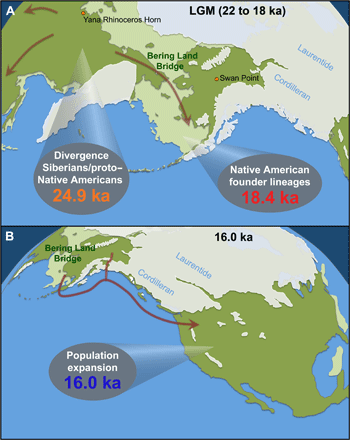
This is going to take some digging into!!
You're most welcome!
Found the original study the article is citing. My bad! It turns out it was a much more comprehensive study that your article pulled from.
advances.sciencemag.org...
The OP article focused on the South American information when the study encompassed a nailing down of the original populating of both North & South America using DNA to determine migration.
Abstract
The exact timing, route, and process of the initial peopling of the Americas remains uncertain despite much research. Archaeological evidence indicates the presence of humans as far as southern Chile by 14.6 thousand years ago (ka), shortly after the Pleistocene ice sheets blocking access from eastern Beringia began to retreat. Genetic estimates of the timing and route of entry have been constrained by the lack of suitable calibration points and low genetic diversity of Native Americans. We sequenced 92 whole mitochondrial genomes from pre-Columbian South American skeletons dating from 8.6 to 0.5 ka, allowing a detailed, temporally calibrated reconstruction of the peopling of the Americas in a Bayesian coalescent analysis. The data suggest that a small population entered the Americas via a coastal route around 16.0 ka, following previous isolation in eastern Beringia for ~2.4 to 9 thousand years after separation from eastern Siberian populations. Following a rapid movement throughout the Americas, limited gene flow in South America resulted in a marked phylogeographic structure of populations, which persisted through time. All of the ancient mitochondrial lineages detected in this study were absent from modern data sets, suggesting a high extinction rate. To investigate this further, we applied a novel principal components multiple logistic regression test to Bayesian serial coalescent simulations. The analysis supported a scenario in which European colonization caused a substantial loss of pre-Columbian lineages.

This is going to take some digging into!!
edit on 21-4-2016 by Caver78 because: (no reason given)
new topics
-
To become president, Zelensky had to learn Ukrainian
Political Conspiracies: 4 hours ago -
Green Grapes
General Chit Chat: 8 hours ago
top topics
-
Joe meant what he said about Hunter's pardon....
US Political Madness: 17 hours ago, 13 flags -
S.C. Jack Smith's Final Report Says Trump Leads a Major Conspiratorial Criminal Organization!.
Political Conspiracies: 15 hours ago, 11 flags -
Advice for any young Adult .
General Chit Chat: 16 hours ago, 10 flags -
Green Grapes
General Chit Chat: 8 hours ago, 6 flags -
To become president, Zelensky had to learn Ukrainian
Political Conspiracies: 4 hours ago, 5 flags -
Regent Street in #London has been evacuated due to a “bomb threat.”
Other Current Events: 17 hours ago, 3 flags -
Those Great Fresh Pet Commercials
Television: 13 hours ago, 3 flags
active topics
-
The Truth about Migrant Crime in Britain.
Social Issues and Civil Unrest • 33 • : Freeborn -
Russia Ukraine Update Thread - part 3
World War Three • 6905 • : Arbitrageur -
Planned Civil War In Britain May Be Triggered Soon
Social Issues and Civil Unrest • 22 • : Freeborn -
Gravitic Propulsion--What IF the US and China Really Have it?
General Conspiracies • 36 • : GotterDameron23 -
Labour Plotting to Postpone May's Council Elections ?
Regional Politics • 21 • : angelchemuel -
Los Angeles brush fires latest: 2 blazes threaten structures, prompt evacuations
Mainstream News • 118 • : Mantiss2021 -
To become president, Zelensky had to learn Ukrainian
Political Conspiracies • 4 • : BedevereTheWise -
What Comes After January 20th
Mainstream News • 34 • : charlest2 -
Some sausage, some chicken, some sauce, some onions and some garlic...and some peppers!
Food and Cooking • 4 • : putnam6 -
S.C. Jack Smith's Final Report Says Trump Leads a Major Conspiratorial Criminal Organization!.
Political Conspiracies • 42 • : WeMustCare
13

